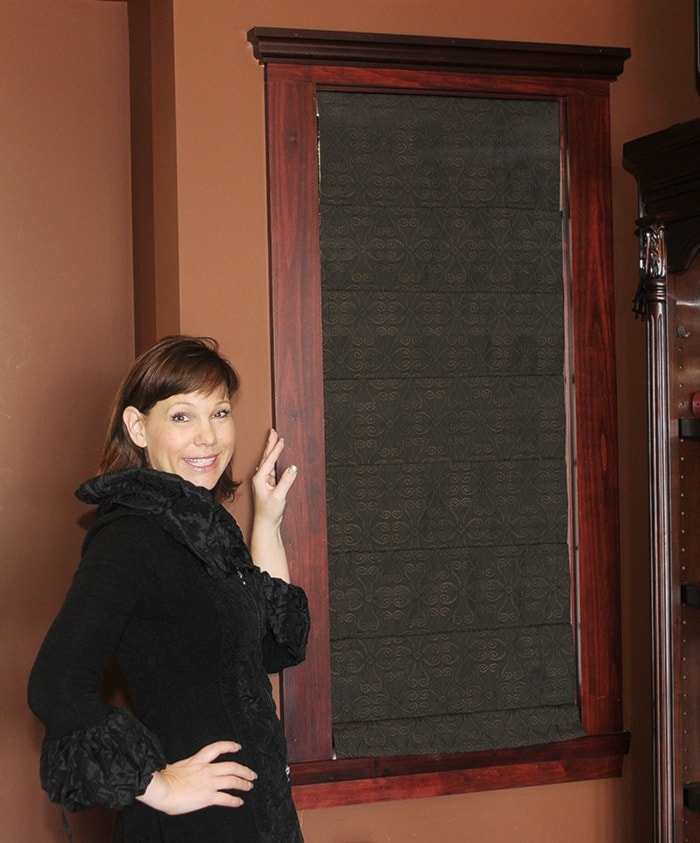If you’re looking to add panache to your home, window coverings should be right at the top of the to-do list.
Window coverings have the potential to really make or break the ambiance, comfort, warmth and personality of a room or a whole house, says Doris Gagel, of Gagel’s Custom Draperies.
There are endless options available, she adds, and what you choose can really say a lot about you, your style and your personality.
So it goes without saying that the wide variety of personalities out there means window covering styles are all over the map right now.
Tammy Haywood, owner of the Pitt Meadows-based interior design company, Stylicious, says, “The trends in window coverings today are much like the trends in everything else ... lots of contrasts.”
Haywood says sleek, minimalist looks are very in, but there’s also lots of demand for the more traditional looks. Functionality is big, simplicity is key for many people, and neutrals are very popular.
That said, big floral prints on draperies are gaining ground again, and jewel tones like emerald green, sapphire blue, ruby red and amethyst purple are very hot.
Again, lots of personalities to cover, with lots of options to be had.
Gagel has noted of late that the cycle is swinging back towards draperies after many years when blinds almost completely dominated the market.
“For a long time it was almost all blinds, but we’re starting to see more interest in draperies again as people want to add more excitement and colour to their rooms,” says Gagel, who has seen all the trends come and go over the past 35 years that she’s operated her company.
That said, blinds are still very popular, especially in the wood and faux wood materials.
Roller shades are in high demand, as well, but pleated shades and vertical blinds aren’t nearly as sought after as they once were. For instance, where once sliding glass doors were almost exclusively the domain of vertical blinds, today you’re just as likely to see draperies, says Gagel.
As one might expect, age is certainly a factor in what people are choosing, she notes. Younger people tend to opt for more modern looks, while older individuals are more inclined to go the more traditional route.
Haywood offers the following questions to ask yourself when considering window treatments:
• Function – is it needed for privacy, to control light, assist with energy efficiency, or aesthetics?
• What is the budget?
• Is it for you or for resale?
• What look or materials are you drawn to?
• Are you trying to hide your window casings or show them off?
Once you’ve answered these questions, you’re ready to shop.
“Window coverings can be expensive,” says Haywood, “so when picking more expensive or luxurious products it is great to keep this in mind. Keeping windows neutral will allow you to change paint colors or furnishings in the future without necessarily needing to change out window coverings as well. Neutrals are also better for resale. Builders, flippers and owners who may be looking at selling should take this into consideration.”
Both Haywood and Gagel agree motorized automation is very big right now with those who can afford it, especially in homes where large, tall windows make opening and closing window coverings easily by hand rather impractical.
The also agree that print draperies are a great way to bring a room together.
“To create harmony, choose a pattern with several of your colors from the room,” says the Pitt Meadows interior designer. “Instantly you create a look of intention. Your fabric becomes the blueprint that dictates all of the other elements as necessary, even if you are adding the draperies at the end.”
In the end, says Gagel, it’s your personal taste that should dictate the final results regardless of what is trending.
“When customers tell me they want something in particular I’ll say to them: ‘Is this something you want to replace in three to four years or can you live with it for 20 years?’ Given the cost, it’s usually better to do something you know will still be nice for years to come.”
Robert Prince is a freelance writer who lives in Maple Ridge.
